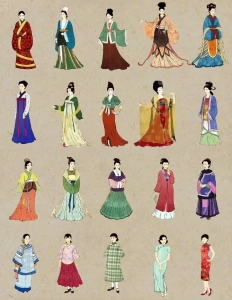
Traditional Chinese clothing is an essential part of Chinese culture, representing not only China’s rich history but also the diversity of its society, status, and cultural expressions. From the elegance of Hanfu to the modern grace of Qipao and the celebratory beauty of wedding garments, traditional clothing holds an irreplaceable place in Chinese culture. In recent years, with the rise of cultural confidence, traditional Chinese clothing has experienced a revival, becoming an important part of the fashion scene and attracting a growing number of young people.
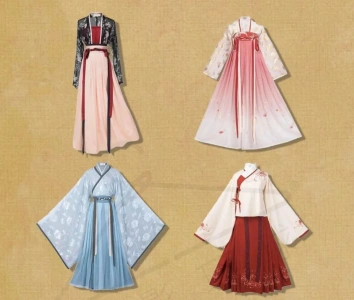
As one of the most iconic forms of traditional Chinese clothing, Hanfu has a history stretching back thousands of years. Its features include wide sleeves, flowing robes, and a waist tied with a belt. These elements not only reflect the traditional Chinese concepts of “ritual” and “harmony” but also showcase exquisite embroidery and fabric choices that demonstrate remarkable craftsmanship and aesthetic depth.
Recently, with the revival of Hanfu culture, an increasing number of people are choosing to wear Hanfu for cultural events, weddings, and even everyday outings. Modern Hanfu is no longer just a historical replica but has become a part of youth culture, serving as a way for people to express their love for and pride in traditional Chinese culture.
Wearing Hanfu is more than just donning a garment; it’s a cultural experience. The attire emphasizes the spirit of “heaven and humanity” and the display of “ritual” through clothing. Depending on the occasion, different styles of Hanfu are worn to reflect the wearer’s social status and cultural cultivation. For example, men wear long robes that convey dignity and simplicity, while women’s Hanfu typically features intricate decorations and flowing skirts, symbolizing grace and poise.
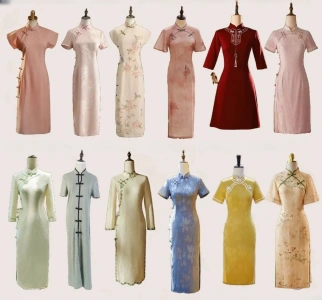
The Qipao, a traditional garment that became popular in early 20th-century Shanghai, continues to hold a place of importance in both Chinese and global fashion today. The Qipao is known for its figure-hugging design, which accentuates the curves of the body. Made from silk, it often features intricate embroidery or prints that add artistic value. Today, the Qipao is not only worn for everyday occasions but also for weddings and formal events, where it is seen as a symbol of elegance and timeless beauty.
For weddings, many couples opt for traditional wedding attire, with the bride wearing a Qipao or a red wedding gown. The color red symbolizes joy, good fortune, and prosperity in Chinese culture. Over time, the Qipao has not only retained its traditional appeal but has also been updated to reflect modern tastes, making it a popular choice for brides seeking to combine tradition with style.
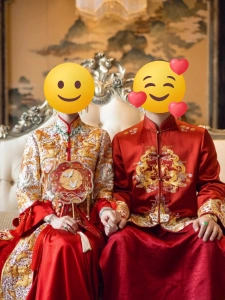
Chinese traditional wedding attire is rich in symbolism, representing a new beginning, blessings, and the joining of two families. The groom typically wears a traditional long robe, reflecting the values of Confucianism and familial respect, while the bride wears a red Qipao or a ceremonial gown, symbolizing happiness and well-wishes.
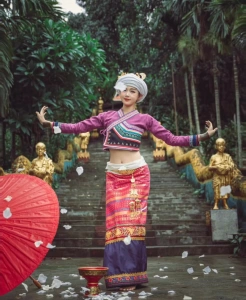
Traditional Chinese clothing is closely tied to etiquette and cultural rituals. For example, wedding attire not only serves as decoration but carries profound symbolic meaning, wishing the couple prosperity and happiness. The clothing worn on different occasions reflects one’s social position and cultural identity, reinforcing the deep cultural values embedded in Chinese society.
In recent years, with the rise in cultural awareness and global cultural exchange, traditional Chinese clothing has experienced a resurgence. From Hanfu becoming a popular choice for streetwear to Qipao being worn at modern weddings, traditional garments are no longer just relics of the past. They have become part of everyday life, especially for cultural events, weddings, and festivals.
Many young people now wear traditional clothing as a way to connect with their heritage, and designers have also begun to incorporate traditional elements into contemporary fashion. This blend of the old and the new has given traditional Chinese clothing a fresh new life and global recognition.
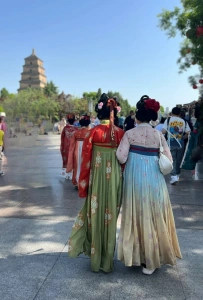
For modern individuals, traditional Chinese clothing is no longer reserved for cultural events or weddings. Many people choose to wear Hanfu, Qipao, and other traditional garments for social gatherings, photoshoots, or travel. Designers are blending traditional elements with modern fashion trends, creating outfits that are both culturally meaningful and stylish.
Discover rich Chinese traditions and cultural practices through festivals, customs, and history.

 English (US)
English (US)